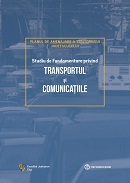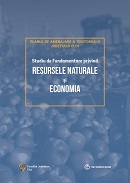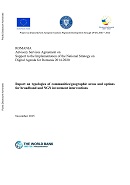





Membrii Centrului de Cercetare a Aşezărilor şi Urbanism au făcut parte din următoarele proiecte:
PLANUL DE AMENAJARE A TERITORIULUI JUDEȚEAN CLUJ Cluj (PATJ)
Studiu de fundamentare privind Dotarea Tehnică Teritorială
Coordonatori: BENEDEK Jozsef, MOLDOVAN Ciprian, CRISTEA Marius, VARVARI Ștefana, IONESCU-HEROIU Marcel
Membri: ZOTIC Vasile, ALEXANDRU Diana-Elena, BĂTINAȘ Răzvan, MAN Titus-Cristian, DOLEAN Bogdan-Eugen, HĂRĂNGUȘ Iulia
Beneficiar: Consiliul Județean Cluj
Elaborare: Banca Mondială, București, 2020PLANUL DE AMENAJARE A TERITORIULUI JUDEȚEAN CLUJ Cluj (PATJ)
Studiu de fundamentare privind Transportul și Comunicațiile
Coordonatori: BENEDEK Jozsef, MOLDOVAN Ciprian, CRISTEA Marius, VARVARI Ștefana, IONESCU-HEROIU Marcel
Membri: ZOTIC Vasile, ALEXANDRU Diana-Elena, MAN Titus-Cristian, DOLEAN Bogdan-Eugen, HĂRĂNGUȘ Iulia
Beneficiar: Consiliul Județean Cluj
Elaborare: Banca Mondială, București, 2020PLANUL DE AMENAJARE A TERITORIULUI JUDEȚEAN CLUJ Cluj (PATJ)
Studiu de fundamentare privind Resursele Naturale și Economia
Coordonatori: BENEDEK Jozsef, MOLDOVAN Ciprian, CRISTEA Marius, VARVARI Ștefana, IONESCU-HEROIU Marcel
Membri: STĂNCULESCU Oana, DEZSI Ștefan, MAN Titus-Cristian, DOLEAN Bogdan-Eugen, HĂRĂNGUȘ Iulia
Beneficiar: Consiliul Județean Cluj
Elaborare: Banca Mondială, București, 2020THE ATLAS OF RURAL MARGINALLIZED AREAS AND OF LOCAL HUMAN DEVELOPMENT IN ROMANIA
Coordinators: TEȘLIUC Emil, GRIGORAȘ Vlad, STĂNCULESCU Manuela Sofia
Members: SANDU Dumitru, CORAD Bogdan, IAMANDI-CIONARU Cătălina, MAN Titus, MARIN Monica, MOLDOVAN Ciprian, NECULAU Georgiana
The World Bank, București, 2016Project co-financed from the Sectoral Operational Program Human Resources Development 2007-2013, Invest in people!
ISBN: 978-973-0-21723-0Romania aims to be a country in which all citizens are provided with an equal opportunity to participate in society, where their basic needs are met and their differences respected, and where all people feel valued and can live in dignity.
Our society is still far from this ideal. One in every five Romanian people is income poor. Most of the people living in relative poverty in Romania are in persistent poverty, meening that they have been in poverty for at least the last three years. Despite its relatively low unemployment rate, the country has a very high rate of poverty for in-work people, which is double the EU-27 rate (9 percent). Thirty percent of the population is severely materially deprived, in that they are unable to afford items considered desirable or necessary to lead an adequate live. About seven percent of the people live in households with very low work intensity. In total, about 42 percent of the population is at risk of poverty and social exclusion.
As a response to this situation, the Government of Romania (GoR) has committed itself to lifting 580,000 people out of poverty by 20205 as part of the Europe 2020 Strategy. The decline in poverty between 2008 and 2013 was only 0.9 percentage points (representing 211,000 people rising out of poverty compared with the national target of 580,000). Consequently, in 2014, the GoR asked World Bank for assistance to develop a National Strategy on Social Inclusion and Poverty Reduction 2015-2020 and a corresponding Action Plan. According to this Strategy, the GoR is committed to making substantial progress in combating poverty and social exclusion over the next few years. By 2020, Romania is committed to putting in place a set of policies and programs to (i) lift at least 580,000 people out of relative income poverty by 2020, compared to 2008; (ii) break the inter-generational cycle of poverty; (iii) prevent the recurrence of poverty and social exclusion; and (iv) ensure equal access to social assistance, cash transfers and services to strengthen social cohesion.
From the set of policies and interventions covered by the National Strategy on Social Inclusion and Poverty Reduction 2015-2020, the GoR asked for the World Bank’s support to develop detailed implementation plans for the 2015-2018 period in the form of nine Flagship Innitiatives that are expected to have the greatest impact in terms of reducing poverty and promoting social inclusion.
This Atlas of Rural Marginalized Areas and Local Human Development in Romania represents the Flagship Initiative #6. Specifically the Bank’s technical assistance provided through this project has helped the GoR to develop: (i) a methodology for defining different types of rural marginalized areas based on a set of key criteria and indicators; (ii) detailed maps that present the spatial distribution of the rural marginalized communities by county; (iii) a methodology for defining degrees of local human development from low to comprehensive development, for rural and small urban settlements; and (iv) detailed county-level maps of local human development.
This geographic targeting tool for rural marginalized areas is based on a methodology comparable to that applied in the Atlas of Urban Marginalized Areas in 2014. The Local Human Development Index (LHDI) was initially developed at the administrative unit level within a previous World Bank project in 2013. In this Atlas, the LHDI has been extended and further developed to a finer degree of granularity.
While this document presents the Atlas, the other eight Flagship Initiatives are complementary and meant to form a single package. In short, the Atlas helps to define which rural areas are marginalized, who lives in these areas (the profile of various disadvantaged groups), and where they are located in Romania. The other Flagship Initiatives, particularly #3 on integrated social services at the community level and #4 on disadvantaged schools, describe how to intervene in the poorest rural areas in order to achieve the greatest impact in terms of reducing poverty and promoting social inclusion|full text|.ROMANIA. ADVISORY SERVICES AGREEMENT ON SUPPORT TO THE IMPLEMENTATION OF THE NATIONAL STRATEGY ON DIGITAL AGENDA FOR ROMANIA 2014-2020
Coordinators: BEZZINA Jerome
Members: STĂNCULESCU Manuela, MOLDOVAN Ciprian, CORAD Bogdan, IAMANDI-CIONARU Cătălina, MARIN Monica, NECULAU Georgiana, TROCEA Andreea
The World Bank, București, 2015Project co-financed from the Sectoral Operational Program Human Resources Development 2007-2013, Invest in people!
This report is the second deliverable of the first component of the World Bank Technical Assistance to support the Ministry of Information Society (MIS) for the operationalization of the NGA&NGN strategy.
Analyzing the legal, regulatory, institutional and competitive framework for Electronic Communications, NGN Development Plan in Romania commands the characterization of an Analytical Mapping Framework which, once confronted to the local market structure and national project initiatives, can be turned into a powerful Geographical Mapping Exercise capable of setting genuine intervention models to help the Government to meet the goals Digital Agenda for Romania 2020.
The general methodology adopts in this first component is to used the Analytical Mapping Framework to propose first a Coverage Gap Analysis addressed in the first report and secondly to translate it into a Geographical Mapping Exercise which has the general purpose to address coverage gaps in clustering the territory, identify selected communities and associate the most appropriate business and investment models to guide and to frame public intervention.
Pursuant to recommendation 3 on implementation of a mapping tool issued in the report 1 this second rapport carries out a Geographical Mapping Exercise and proposes a set of project clusters and communities associated with relevant associated intervention models.
In addition, this mapping exercise is necessary for providing the information needed to decide on the four strategic choices identified in the European Commission Guide to High-Speed Broadband Investment namely the Choice of the infrastructure type, of the investment model, of the business model and eventually of the financing tools.
This mapping exercise describes the policy context as well as the current situation and the investment need in broadband. Thus, in order to identify where and how to intervene, the mapping should answer questions such as: (i) What are the needs for services based on high speed broadband among the socio-economic actors?; (ii) What are the problems to overcome for the rapid deployment and for facilitating usage of high speed broadband?; (iii) Which benefits will broadband create for various groups of residents and for society at large in terms of economic growth, business development, employment, tourism, education etc.?; (iv) How strong is competition for broadband services in the selected areas?; (v) What role can local communities play in aggregating demand and contributing to investment? Also, the mapping should identify the main stakeholders from the targeted communities as well as the possibilities to aggregate or 'federate' the targeted small communities into networks with integrated broadband infrastructure.
This paper presents such a mapping for Romania, carried out in August-September 2015 |full text|.





